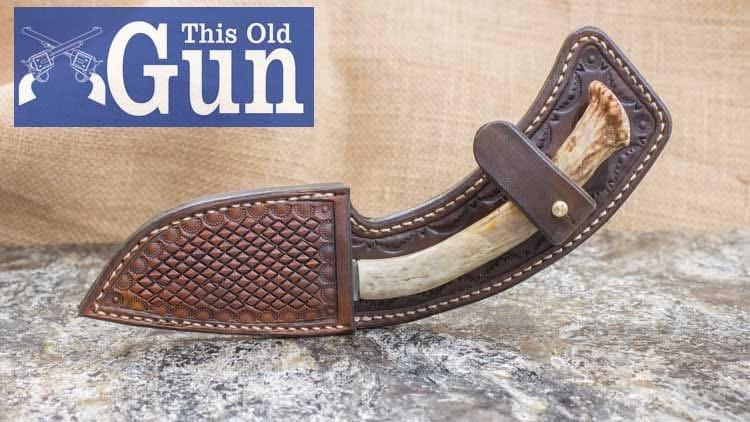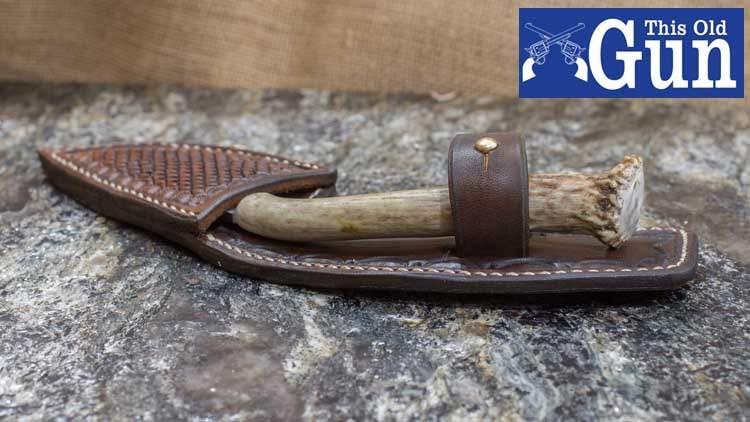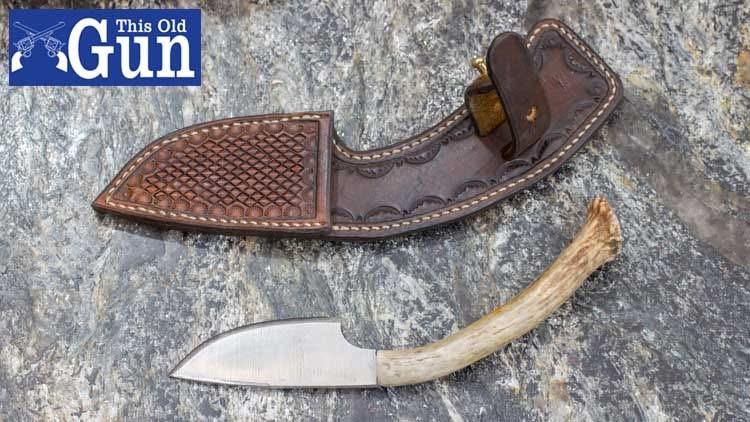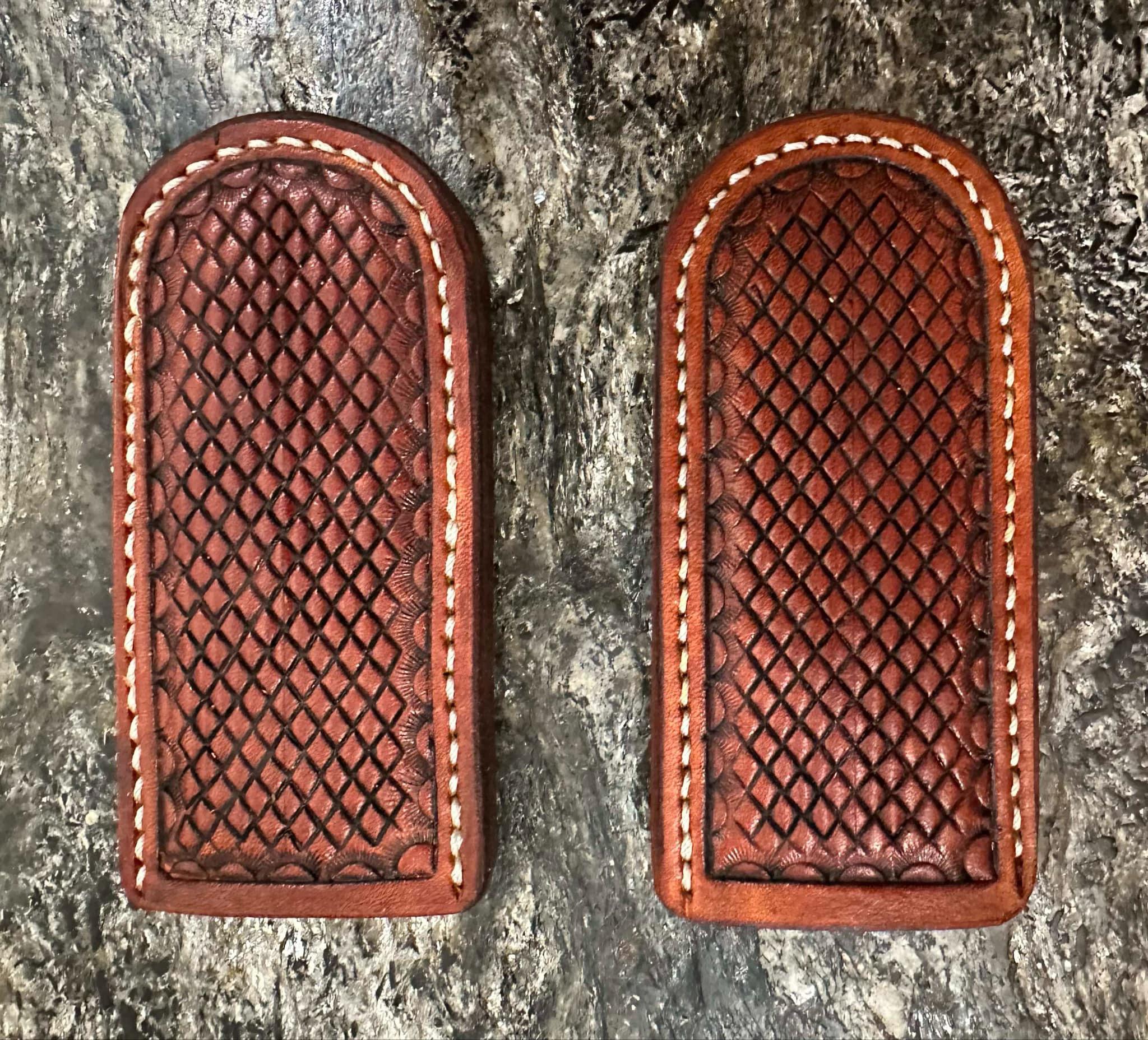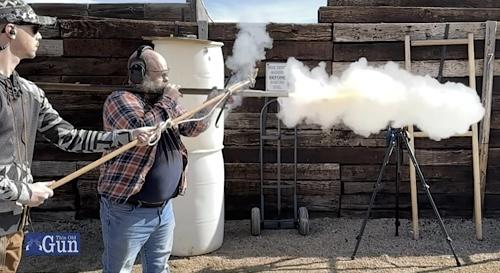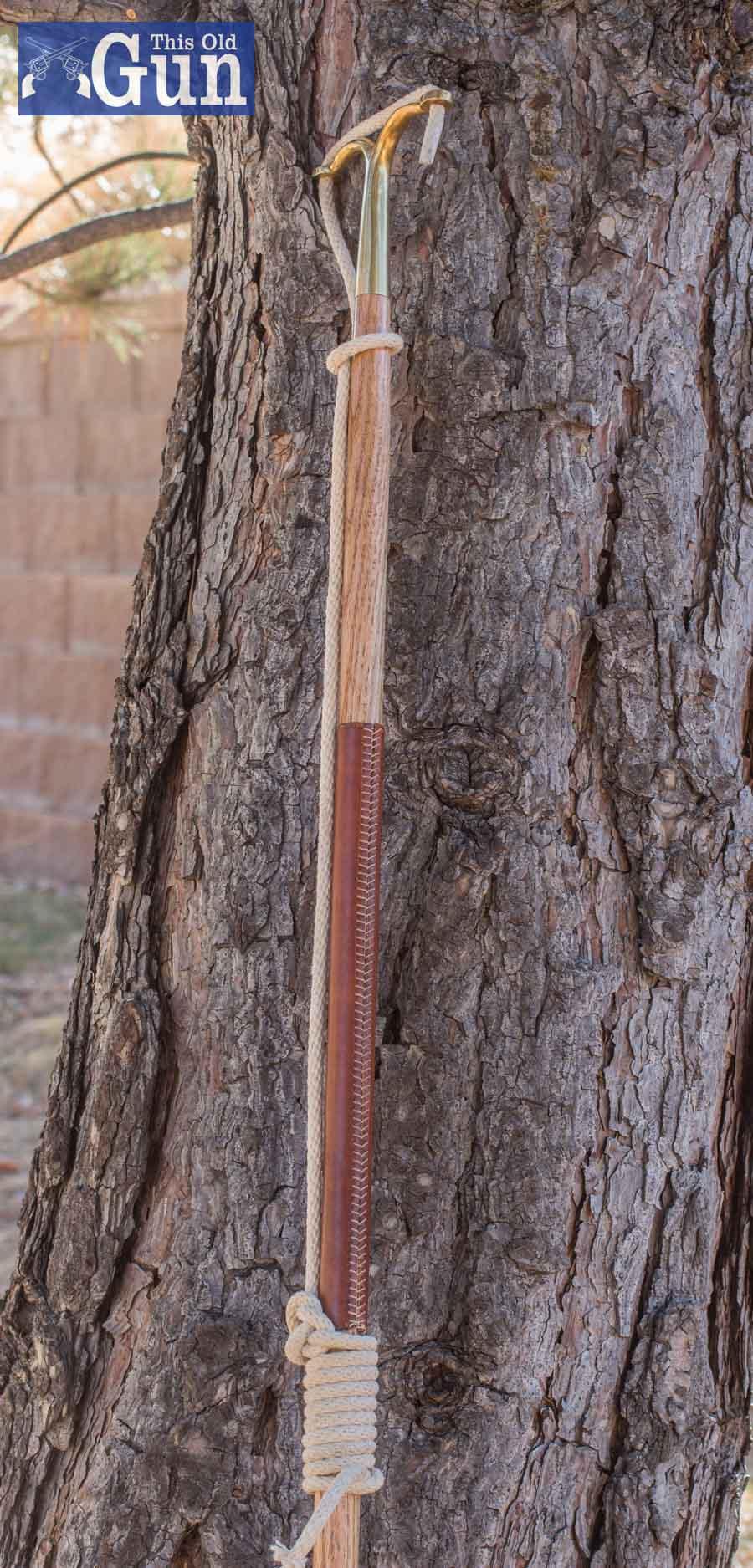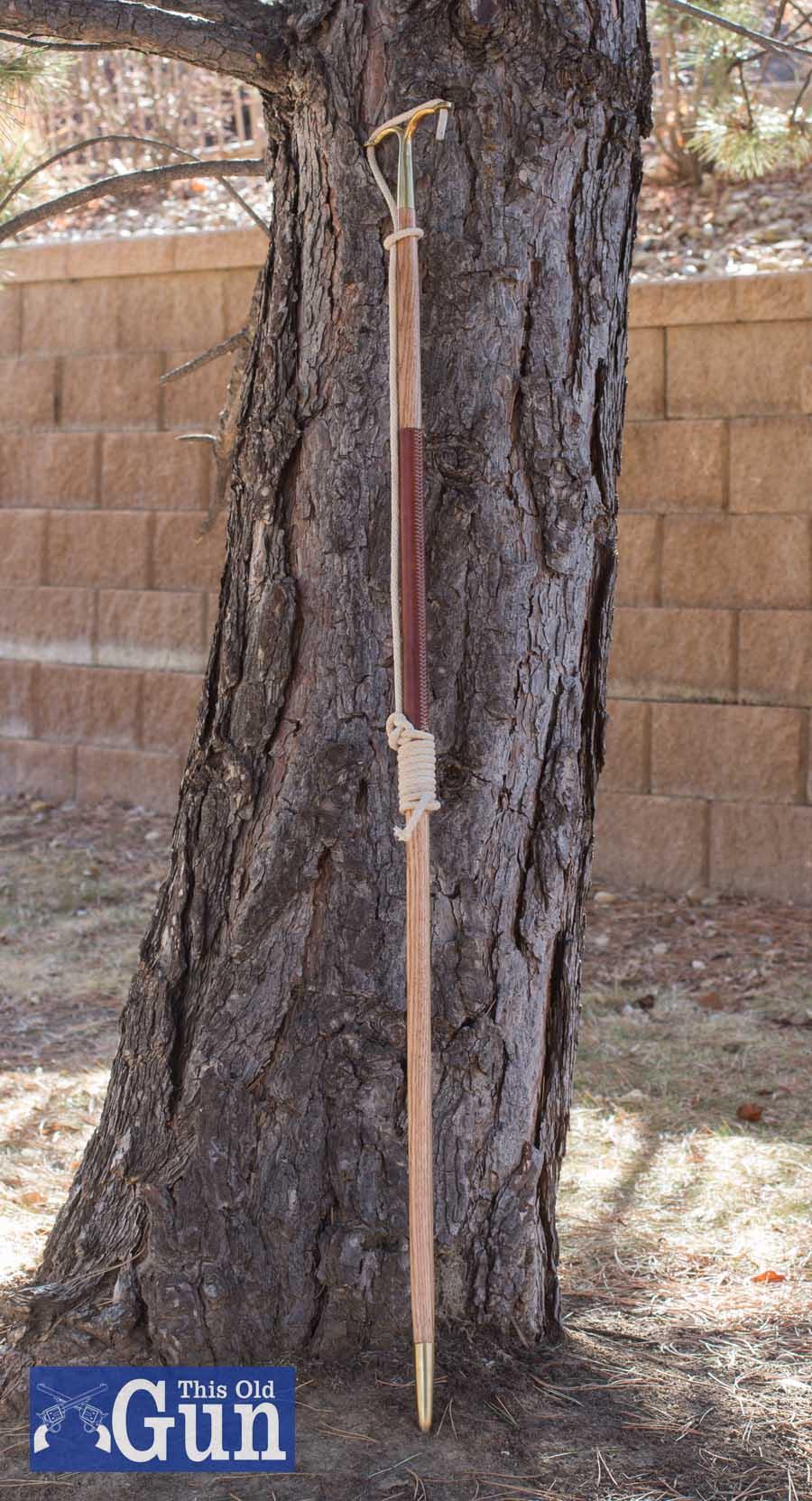-
Posts
456 -
Joined
-
Last visited
Content Type
Profiles
Forums
Events
Blogs
Gallery
Everything posted by Littlef
-
I’ve had this knife laying around for a year … maybe two. I’m planning on making a possibles bag for shooting muzzle loaders, and I’m going to attach it to the strap, when I make the bag. Figured I go ahead and get the sheath knocked out. I gotta learn not to be in a hurry. There’s a couple little mistakes in the stamping cause I was going to fast. Also, I didn’t tape the leather before stamping. I figured it’s so small it won’t make a difference. It makes a difference, and the leather still stretches. I was able to make some adjustments, and it works fine. I gotta learn to just stop working when I get to a point where I just want to be done.
-
I normally pour it in a big Tupperware container. I dip the leather in it. I’ve noticed that if I let the leather sit after dipping for 5 to 20 minutes, it continues to get darker. Also, when you put some neatsfoot oil on it, it also gets darker.
- 54 replies
-
- vinegaroon
- roon
- (and 10 more)
-
That’s good clean work. Well done.
-
It’ll still blacked the leather, My guess is, if you look close, you’ll probably still see the markers. From a distance, you probably won’t see the markers. The lighter green will probably be masked more than the darker purple. Hard to say 100% until you try it.
- 54 replies
-
- vinegaroon
- roon
- (and 10 more)
-
Thanks. I didn’t think of that, but now that you say it, they absolutely look like stock checkering. Even better
-
Absolutely!
-
Quick little project. Made of pair of handle covers for small iron skillets for a Friend of a friend.
-
thanks, my friend said the same thing. Happy little accidents
-
So, I have a replica of a medieval handgonne. It’s basically the first iteration of a handheld firearm. The term literally means hand cannon. We were firing it using a linstock, which is a pole that holds a slow burning piece of rope. It was really windy. When we were done shooting, the match didn’t get fully extinguished. The constant 15-20mph winds stoked the match, and it sat there and smoldered against the linstock, and burned about a 30% percent the way through it. To fix it, I took my chisels, and cut the burned section out in a squared off channel. I glued in a new patch of wood, and reshaped it back to match the handle. I sanded off as much of the burned wood as I could without changing the shape of the handle, and then I put a leather wrap around it, and baseball stitched the seam. Looks good as new. Back in business.
-
Thank you very much. It’s been a really fun project, that I’ve been slowly adding to for a couple years, One little piece at a time.
-
Thanks Dan! Last weekend and I went and shot trap with my friend. He was super happy with it, and it worked great. I had a lot of people looking and asking about it.
-
Thanks Tom. I did two needles. I’m no expert. I think this was the first time trying a baseball stitch. I watched a couple youtube videos, and went for it. Since this was an odd shape…. It’s not round, it’s more oval. And it tapers, being thicker at the handle, to thinner right before there’s the wall around the brush head. I wetted the leather, and took binder clips and pulled it as tight as they would hold. About every 15-20 minutes I’d look it over, and see where it was stretching and getting “baggy”. Then I’d pull it tight again, and do a little trimming, if need be. Once it formed and quit stretching and contracting, I punches the stitch holes, and did the baseball stitch. and I just used regular straight saddle stitching needle. I bet with ,correct curved baseball stitch needles, you could get a tight more precise stitch line…. With practice.
-
Thank you very much. It’s what I call, good enough. It’s certainly better than just a white piece of plastic. Just trying to make the tools blend in with what “could be” period correct.
-
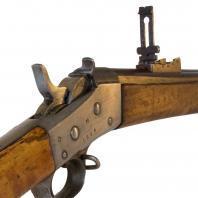
Tinting resolene
Littlef replied to ffjdh's topic in Dyes, Antiques, Stains, Glues, Waxes, Finishes and Conditioners.
That what I do. I save little condiment cups any time I get take out, or cut the bottom inch off a Togo cup so I don’t cross contaminate. - I also thin it with water, so I use the little cups to thin it out however much I need. -
Good looking Rig!!
-
My thoughts (for what its worth) are that you probably wouldn't want to oil or grease the strop. When you're stropping a blade, its the friction between the blade and leather with the polishing compound that's doing the work. I would image if you are putting a lubricant in there, it would just decrease the friction, and the polishing effect. - a little piece of leather from your scrap pile is pretty much free, and would give you the opportunity to experiment and see what happens.
-
That is spectacular.
-
I always cut my dye with alcohol. I don't really measure, but I cut it pretty close to 50/50. I applied it with a shearling applicator. possibly. I think I bought the dye over a year ago, and jI ust opened it. I do keep supplies in the garage from time to time. Maybe it was out there sometime last year during a freezer.
-
I brush on 50-50 Resolene. I let the antique dry a day if I can. I use cheap throw away bristle brushes, and brush it as gently as I can. Even then, I still struggle with the Resolene dissolving some of the antique and pulling some of it out of the stamping. One day, I'll get an airbrush. I think that's probably the best way, so there no physical abrasion to pull the antique up. - I think you could build a small table top paint booth (cardboard, plywood, or some combination) with an exhaust fan, and you could get away with small jobs, or breaking up larger jobs into smaller sections. I'd think you'd need to make a set up that backs right up to a window or a door, if you can't actually cut a vent.
-
Yea, I think you might have misunderstood what he was talking about. --- It's a common process to lightly oil leather prior to dyeing it. It can help distribute the dye more evenly, and prevent some blotchiness. You would do this in a later process, after you have stamped the leather. Casing the leather (with water) is a process to get a proper hydration level so the leather will take the stamping.... and make the nice burnishing marks in the stamping which makes it really pop. You case the leather before you stamp it. When I first started, I remember talking to the guys in Tandy, and they would just overload me with information, and then by the time I got home, everything they said would be jumbled in my head. Like most things, there's definitely a learning curve.
-

Just wondering. Why such thick, heavy belts?
Littlef replied to SUP's topic in Leatherwork Conversation
Depends on what you are carrying on your waist. Dress belts are typically nice and thin, cause you're normally not carrying anything really heavy. My more casual Leather belt I wear with jeans its really thick, but I use it when carrying a holster at the range. Lightweight belts deform if they are carrying too much weight. Western style leather belts fall in this category because a person who wears that belt is far more likely to be carrying something on it, ie. a knife, firearm, other types of tools. I guess it kinda depends on what activities you do in your life. -
I use Tandy 2mm diamond chisels. I'm making primarily holsters. I also have a stitching wheel I use occasionally, but I mostly use the chisels.
-
Thank you sir.



